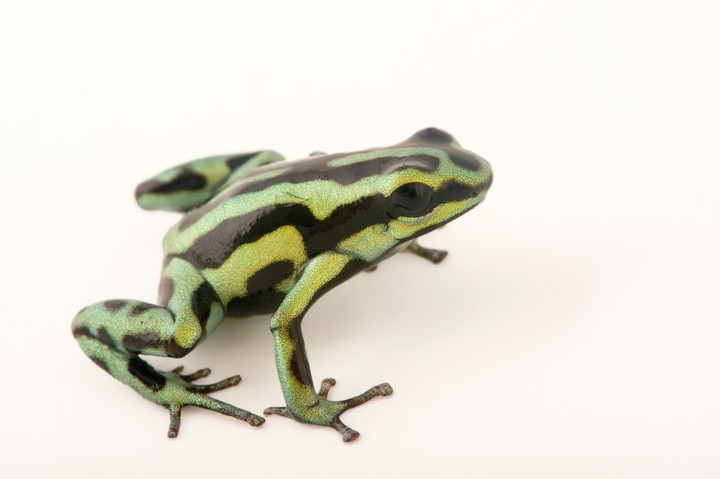Large, old trees define the vertical, horizontal, and seasonal distributions of a poison frog
 Yellow-bellied poison frog, Andinobates fulguritus.
Yellow-bellied poison frog, Andinobates fulguritus.Abstract
In tropical forests, large, old trees (LOTs) can be considered keystone structures for provisioning unique habitats such as decaying wood, roots, cavities, and epiphytes, including those that hold water (phytotelmata). These habitats may also be stratified in vertical space, for example, root structures occur at ground level and below, whereas epiphytes occur above-ground. Canopy habitat is utilized by a diversity of amphibians, but canopy habitat may only be viable in the wet season when epiphytes and surfaces are sufficiently saturated. Here, we examine how the provisioning of microhabitats and structures by LOTs influence the horizontal, vertical, and seasonal distribution patterns of phytotelmata-breeding poison frogs. We conducted ground-to-canopy surveys over 4 years, constituting 6 seasons, in Panama and used mark-recapture techniques on a population of the yellow-bellied poison frog, Andinobates fulguritus. We found that A. fulguritus migrated vertically, tracking seasonal rainfall, and displayed strong philopatry to individual trees. Furthermore, A. fulguritus almost exclusively inhabited the largest trees at the study location, which provided disproportionately high-quality microhabitats and epiphytes compared to other trees. LOTs, and specifically Anacardium excelsum at our site, appear to serve as keystone structures with high conservation value due to their provisioning of unique habitats. We conclude that the distribution of A. fulguritus is defined vertically by the stratification of arboreal microhabitat resources, horizontally by the presence of LOTs providing the resources, and temporally by the seasonal viability of the resources.